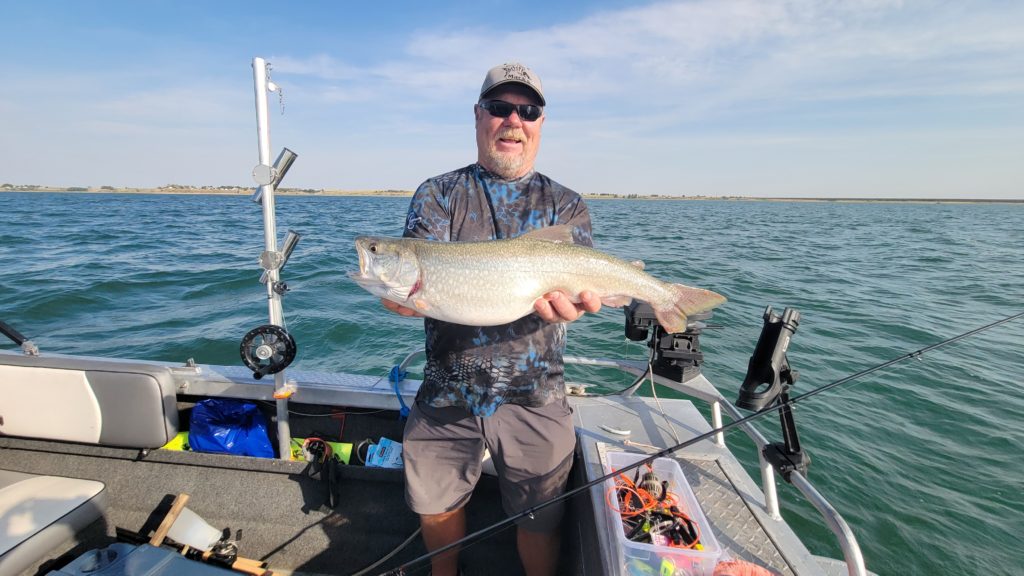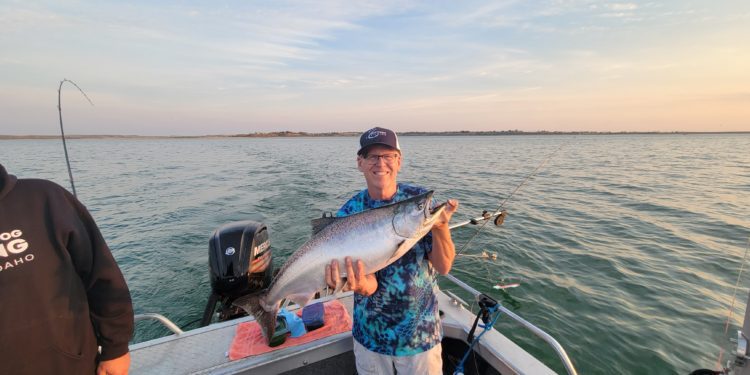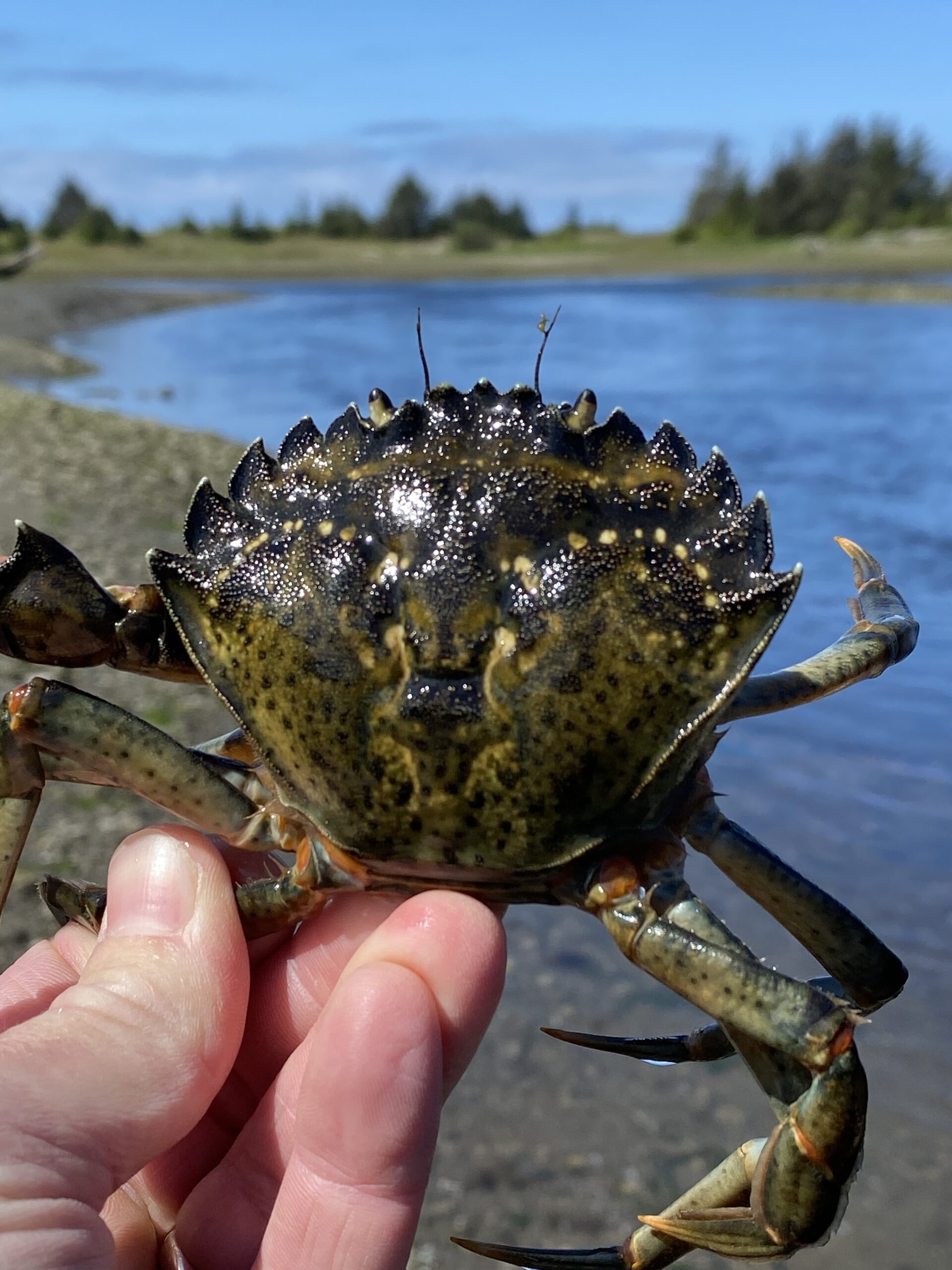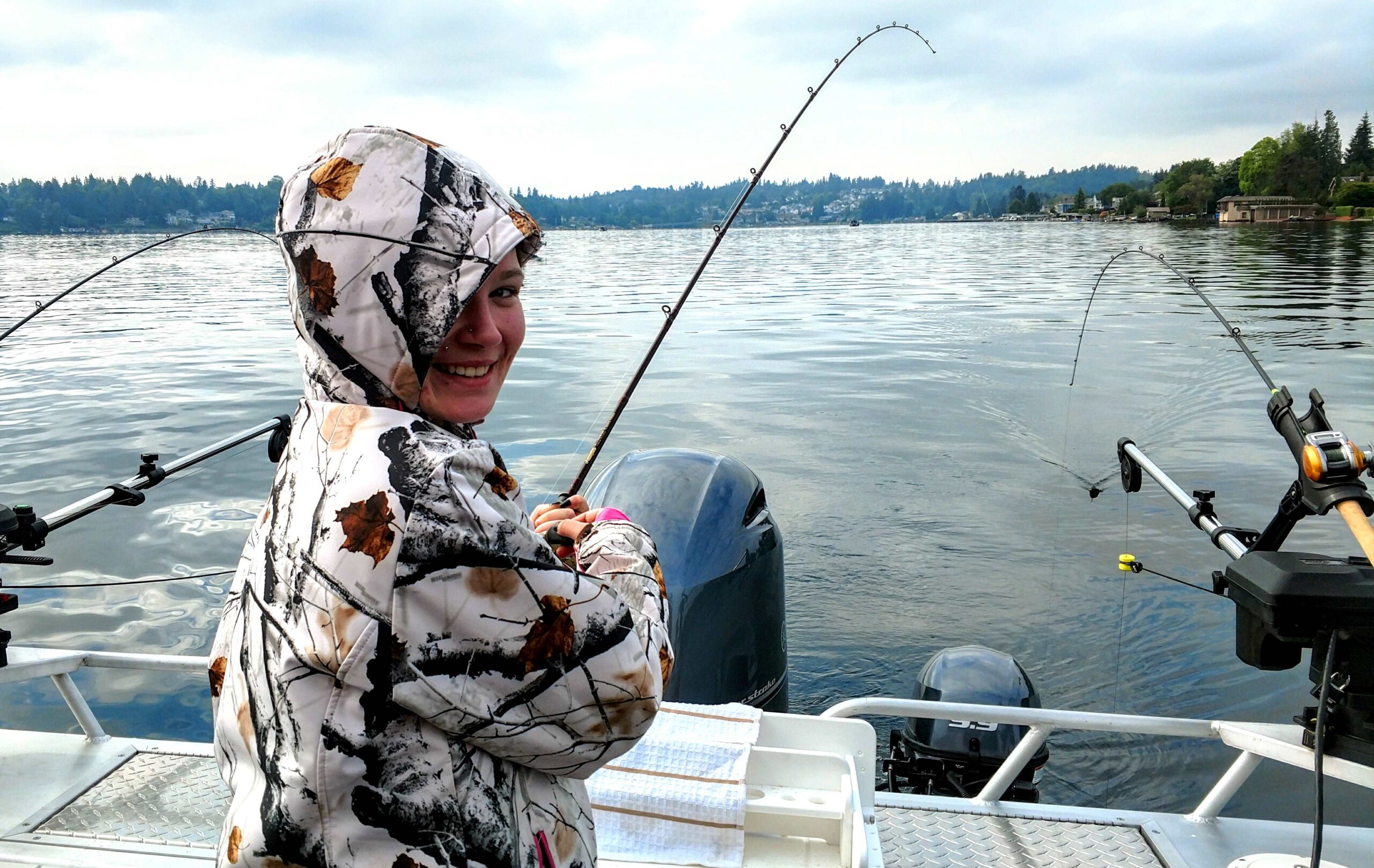Imagine waking up in a place where you could keep five chinook a day, use two rods, barbed hooks, and have a legit chance at multiple twenty-pound plus fish. On top of that, no punch cards, or shortened seasons. Sounds too good to be true? Some pipe dream in a faraway land that time forgot? Well, I’m here to tell you there exists just such a place. It’s been happening for years now and is closer than you may think.
I’m speaking of a place you’d not likely think of when it comes to chinook salmon. That place is Montana, and the location is Fort Peck Reservoir.
My son Matt and I recently got to fulfill a Bucket List dream we’d been talking about for years, namely the Fort Peck Chinook Fishery. We were joined by NWF co-host Rob Holman, and Shelby Ross of Ross Outdoor Adventures. Shelby may be a walleye guide, but he was down for a trip to Fort Peck. And I sent Rob a steady stream of recent angler catches, feeding his enthusiasm. They made the ten-hour drive from Spokane, while Matt and I had a relatively easy five-hour drive from Great Falls to this reservoir in the northeast corner of Montana. The trip goes fast because in Montana you can drive fast, 75-80 miles an hour, and there’s little traffic to contend with. Just keep an eye out for stray deer and antelope, and the occasional suicidal pheasant.
We met at the Cottonwood Inn and Suites in Glasgow, which turned out to be a great place to stay as a base camp for fishing Ft Peck. 18 minutes from the boat launch, Cottonwood Inn and Suites has all the amenities an angler could want, including free charging stations to recharge trolling batteries. It also has RV camping for those with RVs.
Ft Peck’s 3.8 mile long dam was completed in 1937, backing up the Missouri River for an amazing 134 miles in length and 220 feet at its deepest spot. With over 1,500 miles of shoreline, it is longer than the California coastline and bigger than Puget Sound. At 18.7 million acre-feet, it’s the 5th largest man-made lake in the United States. The surrounding countryside is high prairie and borders nearly the entire Charles M Russell National Wildlife Refuge.
Dozens of species of fish inhabit the lake, and it is a world-class body of water for walleye, bass, pike, and lake trout. The chinook were introduced in 1983, but what really caused a boom for the fisheries of Fort Peck was the 1984 introduction of cisco to the reservoir. This species of bait fish, also known as lake herring, rapidly reproduced, and they provide the reservoir with an ample source of food for the various sport fish in the lake. It also is no small reason the chinook have grown so well, with the state record at an impressive 32.05 lbs with a girth of 27.5 inches and a length of 38.25 inches, caught by Greg Haug of Bismark, ND in 2020.
To top it all off, the State of Montana has a massive hatchery at Fort Peck where they raise and release walleye, pike, and salmon – with a capacity to raise and release over 500,000 chinook, it makes for a very healthy population of fish to target.
Launching at the crack of dawn is always a special time of day. We idled out to the main reservoir with the sun cracking the eastern sky, beautiful shades of orange, yellow, and red painting the sky. A brief five-minute run and we began the process of deploying our gear. My boat has two downriggers, and with no tides or wind to deal with I was comfortable stacking them, setting the deep rods at 60 and 90 feet, and stackers 10 feet above. Not more than five minutes after all rods were out, the port deep rod got bitten 60 feet deep. As the line came taunt the drag began to scream – our first Fort Peck chinook was on! Standing next to the rigger, I grabbed the rod and felt the pull of a solid fish. I had brought my knuckle buster reels to Montana and was glad I did! There is no better fight than a big chinook on a knuckle buster. Add to that break-away flashers and this chinook was giving me everything I could handle and then some. Clearing the port side stacker rod, I worked the fish ever closer as frantic runs became shorter and less frequent. Finally, a chrome bright football slab of a chinook appeared. Easing the fish to the net, Rob scooped the fish up and into the boat. Wow, what a pig! It was obvious that these freshwater chinook are feeding good. Plump, and all fins intact, we admired a fish a thousand miles away from its native element. Montana Department of Fish, Wildlife, and Parks certainly created an amazing fishery out in the middle of the prairie.
After bleeding the fish, it fit (barely) in my cooler. Lines back down we continued our troll, noting more boats joining us. As the morning progressed the fleet of boats probably numbered a couple dozen. Spread out over an area of maybe ten by ten miles, over-crowding was not a concern for this fishery!

With high hopes for more fish, we explored the general fishing area. Marks were common at 60-90 feet, and we also noted fish marks on the bottom at 160 feet. Dropping a rigger ball down and bouncing the bottom, it wasn’t too long before I confirmed my assumption – lake trout. Shelby brought the nice 6-pound fish to the boat and in the cooler he went. Since everything we had read and been told indicated the chinook were suspended, we went back to mid-depth with the deep rigger.
The action died off and we came in around 1pm, cleaning our fish at a first-rate cleaning station at the Fort Peck Marina. I stopped in and visited with the owner and guide at the Marina, Scott Collinsworth. Scott is very active on the Montana Salmon Facebook group and willingly shares information on techniques to catch these fish. He indicated the bite had slowed down from the previous week (no doubt a low-pressure front didn’t help) and catch rates were about a fish per boat. That’s still pretty impressive for big 15-25 pound fish (ours was 16 pounds). Even more impressive was another guide boat that came back with nine big chinook! That’s what daydreams are made of.
We retired to the Cottonwood Inn where Rob hit the casino and I hit the bed for an afternoon nap. Cleaning up the boat and re-rigging gear, the day ended with a nice meal at the The Woods, the Inn’s dinner. A nice variety of dishes were available, as well as craft Montana beers on draft and a full-service bar, all at affordable Montana prices.
Our next morning was a cookie-cutter day, as we again started fishing with the sun breaking the horizon. Again, the port rod exploded and Rob grabbed the rod, battling an even nicer fish. As he brought the fish to the net and I scooped it up, I was amazed at the weight in the net – this fish was very close to hitting 20 pounds, another fat, healthy chinook.
A word on gear – when we moved to Montana I kept my salmon gear, knowing that someday it would come in handy for fishing Fort Peck. We certainly went through a lot of lure combinations, most of which I have no doubt would work great if the bite was on. Most anglers fish with flashers, salmon flies, herring, spoons, and a few other salmon-oriented choices. The two big differences I observed from Puget Sound chinook were more fishing at suspended depths and trolling slightly slower. Most anglers trolled at 1.8 -2.2 mph. We started out faster, 2.5-2.9. So, while we did catch a couple fish at this faster troll, by the end of the trip we had slowed down, matching the fleet. I suspect those that enjoy mooching would find these fish to be very co-operative with this technique (note to self, bring mooching gear next year!).

Our second day ended much like the first, with Matt catching a small laker and also a beautiful walleye. We also lost a nice chinook that came unbuttoned.
Interestingly, the weekend saw less anglers on the water, opposite of what you’d see in the Puget Sound fisheries. A couple other observations – the boat ramp etiquette was outstanding. The Marina has a two-lane ramp with a dock. Most anglers launching and retrieving would power their boats on/off trailers, making for fast and smooth lines. Second, we only saw a couple tubers on the water. Pretty much every boat we saw were anglers. There’s a distinct advantage to being far away from population centers!
Although our trip ended with “just” two salmon, I considered it to be a huge success. I learned about the area, the launch, where to stay, and techniques to use. I’m already contemplating next year’s trip and the chance at some multi-fish days!






















